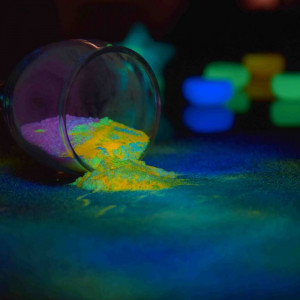| Rangin Nano Sakhtar |

| No Title | 0.02 MB |
| Registration Date | 29 May 2019 |
| Revision Date | 29 May 2019 |
| Share |
Construction Masonry Materials
Anti-bacterial PaintZinc oxide
ZnO Nanoparticle /Nanopowder CAS Number : 1314-13-2Silver
Ag Nanoparticle /Nanopowder CAS Number : 7440-22-4This product is known as antibacterial polyester-based electrostatic powdered paint containing Ag and ZnO nanoparticles. In nano-dimension, antibacterial effect of silver increases significantly, so that they are able to destroy over 650 bacterial species. It is reported that these nanoparticles have significant antifungal activities against some ringworms. Ag nanoparticles interact with sulfur and phosphorus compounds of membrane proteins affecting cell morphology and structure, causing its death. With decreasing particle size, the release of silver ions increases, leading to increasing their antibacterial activities. In nano-scale, ZnO particles produce the reactive oxygen species more than ZnO bulk and so higher antibacterial activity appears in ZnO nanoparticles. It shows high antibacterial activity according to INSO 10900 (Measurement of antibacterial activity on plastics and other non-porous surfaces). The following table clarifies how powerful it is against E.Coli and S.aureus bacteria. Antibacterial activity is an indicator of the product ability to eliminate bacteria. It is obtained by comparison of bacteria number present on control and nanometric samples after 24 hours’ exposure. According to standard, When the antibacterial activity of the product is between 2 and 3, the effectiveness is good. If antibacterial activity is greater than 3, the effectiveness is intense and strong.
With growth in world population and the spread of disease, the number of antibiotic resistant microorganisms is rising along with the occurrence of infections from these microorganisms. Indoor building materials can become major sites of microbial growth when promoting conditions, such as high humidity and nutrient content, are present. Various microorganisms, including potentially pathogenic species, are detected on building materials like tiles and ceramics. Various types of surfaces can be covered by antibacterial paints and coatings in order to prevent the growth of bacteria on them.
Silver and ZnO nanoparticles are highly toxic for a wide range of bacteria and they show very low toxicity for human cells, so that the use of such materials in paints has been a common method for antibacterial protection. Adding silver and ZnO nanoparticles to paints lets them show antibacterial activity.